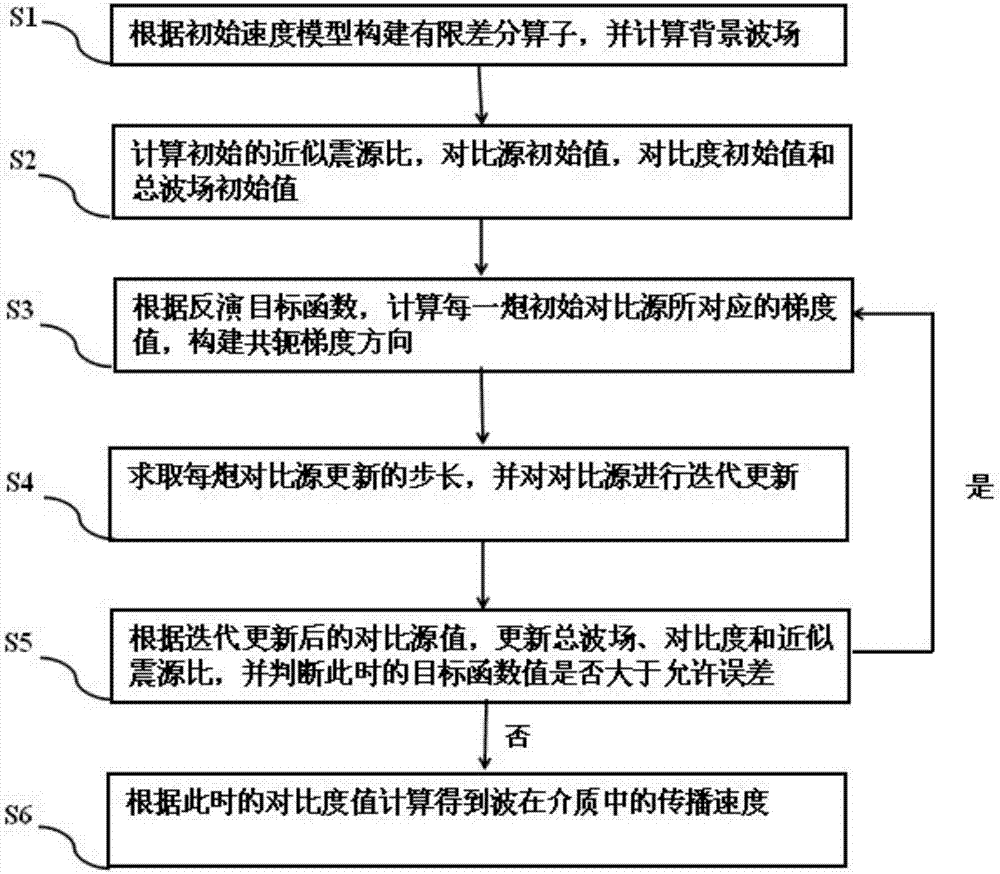Wavelet iterative estimation based finite difference contrast source full waveform inversion method
A full-waveform inversion, finite difference technology, applied in measurement devices, instruments, scientific instruments, etc., can solve the problems of large amount of calculation, lack of inversion, deviation of inversion results from the real model, etc. Effect
- Summary
- Abstract
- Description
- Claims
- Application Information
AI Technical Summary
Problems solved by technology
Method used
Image
Examples
Embodiment 2
[0088] As another embodiment of the present invention, the inventor applies the scheme of the present invention to an overthrust model (i.e. a pushover model), such as Figure 12 As shown, the method of the present invention has been further verified, and the initial smooth velocity model (such as figure 2 b) It is smoothed by the overthrust model, and the first derivative of the Gaussian function is used as the real wavelet ( image 3 a) for generating the observed wavefield, image 3 c is its corresponding amplitude spectrum. In the inversion, the simulated wavelet that generates the background wave field is the Reich wavelet with a main frequency of 10 Hz ( image 3 b), from its amplitude spectrum ( image 3d) It can be seen that the frequency band of the real wavelet is significantly wider than that of the simulated wavelet, and the amplitude difference between the two is large. The comparison source inversion method is different from the conventional full waveform inv...
PUM
 Login to View More
Login to View More Abstract
Description
Claims
Application Information
 Login to View More
Login to View More - R&D
- Intellectual Property
- Life Sciences
- Materials
- Tech Scout
- Unparalleled Data Quality
- Higher Quality Content
- 60% Fewer Hallucinations
Browse by: Latest US Patents, China's latest patents, Technical Efficacy Thesaurus, Application Domain, Technology Topic, Popular Technical Reports.
© 2025 PatSnap. All rights reserved.Legal|Privacy policy|Modern Slavery Act Transparency Statement|Sitemap|About US| Contact US: help@patsnap.com



